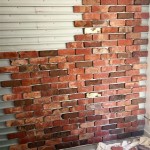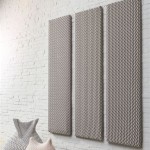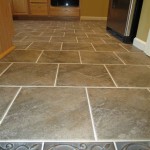Can You Put Tile On Plywood Floor?
When it comes to tiling, the type of subfloor you have can impact the installation process and the overall durability of your tile installation. One common question that arises is whether you can install tile on a plywood floor. The answer is yes, but it requires proper preparation and installation techniques to ensure a successful outcome.
Here are some of the key aspects to consider when installing tile on a plywood floor:
1. Plywood Subfloor Quality:
The quality of the plywood subfloor is crucial for a successful tile installation. The plywood should be at least 3/4-inch thick and made of a moisture-resistant material, such as exterior-grade or marine-grade plywood. Avoid using pressure-treated plywood as it can contain chemicals that may damage the tile.
2. Subfloor Preparation:
Before installing tile, the plywood subfloor must be properly prepared. This includes leveling the floor to ensure a flat surface, removing any debris or dirt, and securing any loose or squeaky areas. Use a level to check for any unevenness and use shims or leveling compound to correct any dips or bumps.
3. Underlayment:
An underlayment is a layer of material installed over the plywood subfloor to provide a smooth and waterproof base for the tile. It helps to distribute weight evenly, reduces sound transmission, and prevents moisture from seeping through the plywood.
4. Mortar or Adhesive:
The type of mortar or adhesive used will depend on the type of tile and the specific installation requirements. Thin-set mortar is a common choice for tile installations, as it provides a strong bond between the tile and the underlayment. Choose a mortar that is specifically designed for use with plywood subfloors.
5. Expansion Joints:
Expansion joints are necessary to accommodate any movement or expansion of the plywood floor. These joints should be installed around the perimeter of the tiled area, as well as around any fixtures or transitions. Expansion joints are typically filled with a flexible sealant to prevent water penetration.
6. Grout:
Once the tile is installed, it must be grouted to fill the spaces between the tiles and create a sealed surface. Choose a grout that is appropriate for the type of tile and the intended use of the tiled area. For example, epoxy grout is a durable option for areas that experience heavy traffic or moisture.
7. Sealing:
After the grout has cured, it is recommended to seal the tile and grout to protect it from stains and moisture. A penetrating sealer is applied to the surface of the tile and grout, which helps to prevent dirt and water from penetrating the pores.
By following these steps and using the appropriate materials, you can successfully install tile on a plywood floor. Proper preparation and installation techniques will ensure a durable and aesthetically pleasing tile installation that will last for years to come.:max_bytes(150000):strip_icc()/SPR-can-i-install-tile-on-plywood-1822594-hero_53499-a99b77cf72094c05a2b501c3ecec465e.jpg?strip=all)
How To Lay Tile On A Plywood Subfloor
:max_bytes(150000):strip_icc()/SPR-can-i-install-tile-on-plywood-1822594-step-01_53492-cfebcee9013a456eab01d7ef14c4bddf.jpg?strip=all)
How To Lay Tile On A Plywood Subfloor

Blog Expert Advice How To Tile Onto Wood Plywood Or Chipboard

How To Install Tile On Plywood Floor

Blog Expert Advice How To Tile Onto Wood Plywood Or Chipboard

How To Install Tile On Plywood Floor
:max_bytes(150000):strip_icc()/SPR-can-i-install-tile-on-plywood-1822594-step-07_53506-026b9e07724c41e4a0e9df54dde2509c.jpg?strip=all)
How To Lay Tile On A Plywood Subfloor

Tiling Over Plywood Subfloors Jlc

Tiling On Plywood Weber

How To Lay Tile Over Plywood
Related Posts








